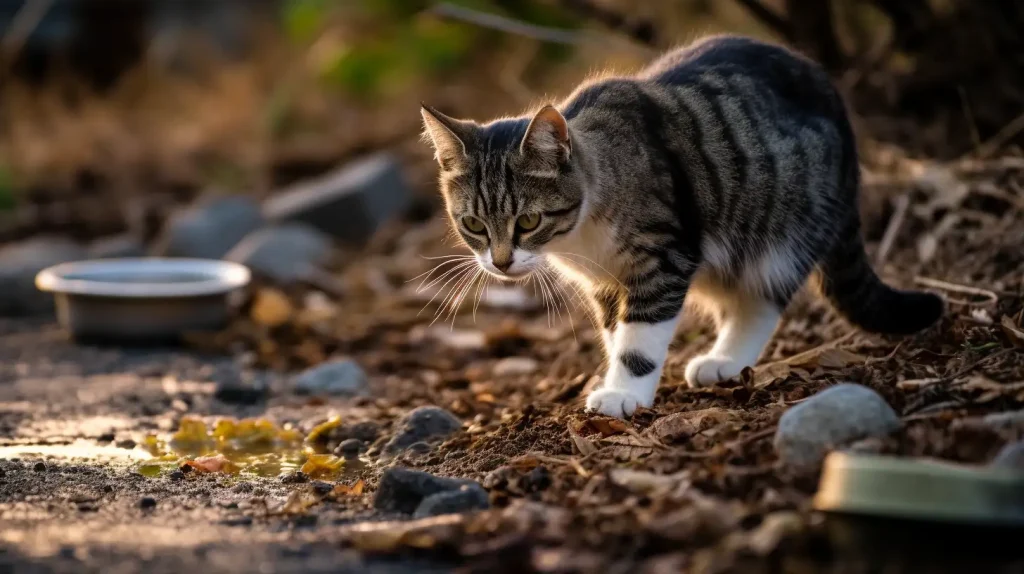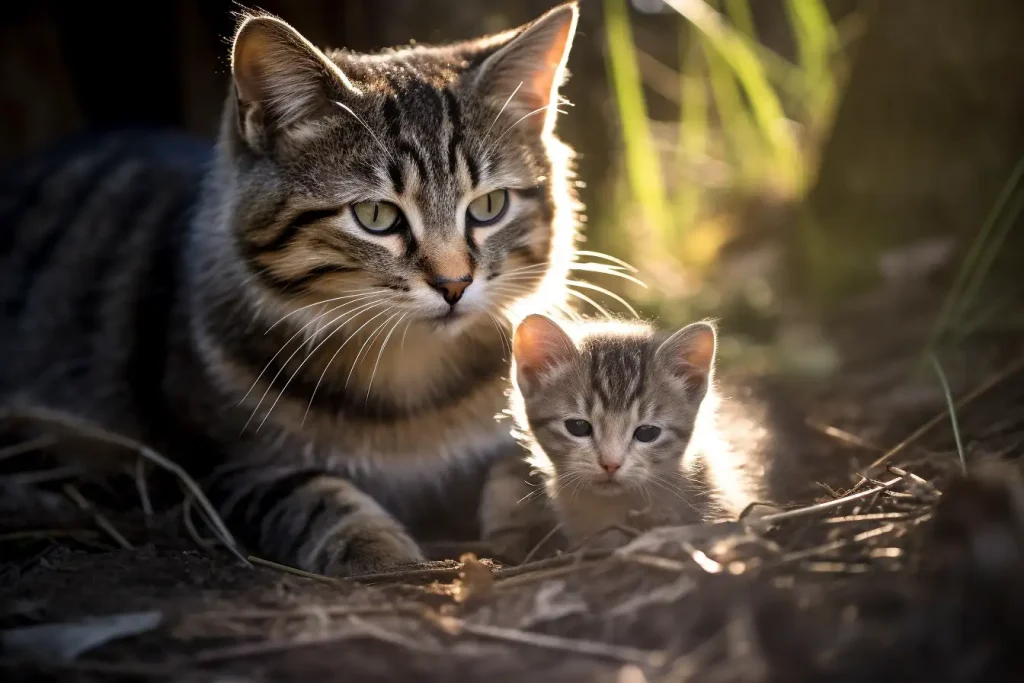Table of Contents
Welcome to this exploration into the important world of Trap-Neuter-Return (TNR) programs. You might have come across this term in a news report, during a conversation with your veterinarian, or perhaps you’ve spotted a cat with a tipped ear and wondered about its story. TNR programs are part of a proactive and humane approach to managing the population of stray or community cats. They’ve been implemented in numerous countries with significant success. But does TNR work?
The Importance of Managing Stray Cat Populations
Whether you’re an animal lover or not, it’s undeniable that managing stray cat populations is important for a number of reasons:
Ecological Balance
Nature has its way of maintaining balance, and it’s our responsibility as humans to respect and protect this balance. Uncontrolled populations of stray cats can lead to overgrazing of local fauna and disrupt local ecosystems.
Public Health Concerns
While the vast majority of stray cats pose no harm to humans, they can sometimes carry diseases that could potentially be transmitted to humans or other pets. By maintaining the stray cat population, we reduce this risk.
The Welfare of the Cats Themselves
Finally, uncontrolled breeding among stray cats often leads to more kittens than available resources can support. This overpopulation can result in malnutrition, disease, and premature death among these animals. By managing populations through TNR programs, we ensure better living conditions and overall welfare for these cats.

How TNR Programs Operate
TNR programs follow a straightforward yet effective approach to managing stray cat populations:
The Process of Trapping
The first step is humane trapping. Volunteers or professionals use baited traps to catch the cats without causing them harm. Once captured, the cats are taken to a facility where they can be neutered or spayed.
Neutering or Spaying Procedures
Under the care of professional veterinarians, the captured cats are neutered (if male) or spayed (if female). This process ensures that they can no longer contribute to the growth of the stray population.
Return and Maintenance of Cats in their Habitats
After recovery from the procedure, the cats are returned to their original locations. This might sound surprising, but it’s actually crucial. These neutered cats will occupy and defend their territory, preventing intact cats from moving in and reproducing. Over time, the stray cat population stabilizes and then gradually decreases.
Training for TNR Volunteers
Have you ever been intrigued by the work that goes into TNR programs and wondered what it takes to become a part of this compassionate cause? One crucial aspect of successful TNR programs is the training that volunteers undergo to ensure the process is carried out safely and effectively.
Initial Orientation and Workshops
As a first step, volunteers typically attend an orientation or workshop. These sessions provide an overview of the TNR process, the importance of such programs, and the roles and responsibilities of volunteers. Orientations often include practical training components and demonstrations to give volunteers a hands-on understanding of various tasks.
Safe Trapping Techniques
One of the key skills that volunteers learn is safe and humane trapping techniques. These techniques are critical in ensuring that the cats are caught without being harmed or unduly stressed. Training includes learning how to set up and bait traps, where to place them for best results, and how to transport trapped cats safely.
Post-Surgery Care and Monitoring
After the cats are neutered, they’re typically held for a short recovery period before being returned to their habitat. Volunteers are trained to provide post-surgery care, which includes monitoring for any complications, keeping the cats comfortable, and feeding them as required.
Community Engagement and Education
Volunteers often play a significant role in educating local communities about TNR programs and the need for such initiatives. Therefore, volunteer training often includes guidance on how to effectively communicate the mission and impact of TNR to the public.
Health Checks and Vaccinations
Alongside the critical process of neutering or spaying in a TNR program, there’s another essential aspect to consider – the overall health of the cats. These community cats, although hearty, can be susceptible to a range of health issues that not only affect them but could also potentially affect other cats or even humans in the vicinity.
Routine Health Checks
During the TNR process, each trapped cat undergoes a routine health check. This involves a general physical examination, where professionals look for any visible signs of illness or injury. They inspect the cat’s body condition, coat quality, eyes, ears, and mouth. This is an opportunity to address any immediate health concerns, such as wounds or infections, that might require treatment.
Vaccinations
In addition to health checks, most TNR programs include administering key vaccinations to the cats. The most common are the rabies and FVRCP (Feline Viral Rhinotracheitis, Calicivirus, and Panleukopenia) vaccines.
The rabies vaccine is particularly crucial as rabies is a fatal disease that can be transmitted to humans. On the other hand, FVRCP is a combination vaccine that protects against three significant diseases in cats: Feline Viral Rhinotracheitis, Calicivirus, and Panleukopenia (also known as feline distemper).
By incorporating health checks and vaccinations into the TNR process, these programs don’t just control the cat population. They also ensure the wellness of these cats and contribute to the overall health of the community, making our shared environments safer and healthier for everyone.

Effectiveness of TNR Programs
A number of studies and real-world examples have shown the effectiveness of TNR programs in managing stray cat populations:
Case Studies Demonstrating Success
In numerous cities and regions around the world, TNR programs have successfully controlled and even reduced stray cat populations over time. For instance, a study conducted on a Florida university campus showed a 66% decrease in the campus cat population over an 11-year period.
TNR vs. Other Methods of Stray Cat Population Management
When compared to traditional methods like euthanasia or catch-and-remove strategies, TNR has proven more effective and more humane. Traditional methods create a “vacuum effect” where new, breeding cats move into the space left by those that were removed. On the other hand, TNR maintains the existing cats, who prevent new cats from moving in and reproducing.
Long-term Impacts and Sustainability
TNR programs create a long-term, sustainable solution for managing stray cat populations. Because the neutered cats continue to live out their natural lives in their territories, they prevent the cycle of overpopulation from starting anew.
Scientific Research Supporting TNR
Evidence supporting the effectiveness of TNR is not simply anecdotal; numerous scientific studies have been conducted that provide empirical data reinforcing the success of these programs.
The Newburyport, Massachusetts Case
One of the most compelling pieces of evidence is a study conducted in Newburyport, Massachusetts, where a TNR program led to the complete elimination of the feral cat colony over a 17-year period. This study, published in the Journal of Feline Medicine and Surgery, not only demonstrated that the cat population declined, but also that the cats in the program showed fewer signs of disease over time, suggesting an improved quality of life.
The Rome, Italy Study
In another study conducted in Rome, Italy, and published in the Preventive Veterinary Medicine journal, researchers observed a significant decrease in the size of cat colonies involved in a TNR program over a 10-year period. The researchers attributed this decline directly to the TNR program, as there were no other significant changes in the environment that could have accounted for it.
University Campus Programs
Multiple studies focusing on university campuses have also provided supportive evidence. These semi-closed environments often struggle with feral cat populations, and TNR programs have been shown to be effective in managing them. A standout is the above-mentioned University of Central Florida example.
These studies and many others like them provide solid scientific evidence for the effectiveness of TNR programs. They serve as valuable tools for communities and policymakers who are considering implementing TNR as a humane and effective strategy to manage stray cat populations.
Comparing TNR Effectiveness Globally
When examining the impact of TNR programs, it’s fascinating to observe how different regions around the world implement and experience success with these initiatives. The varying environmental, cultural, and economic contexts can all contribute to the programs’ outcomes.
North America
In North America, particularly in the United States, TNR programs have seen significant success. Cities like New York have also implemented city-wide TNR programs with positive results. The acceptance and popularity of these programs have grown over the years, thanks to strong advocacy work and public education.
Europe
In Europe, TNR has also been well received. For example, the United Kingdom’s RSPCA and Cats Protection both endorse and support TNR as a humane method for controlling feral cat populations. However, countries like the Netherlands have had mixed results due to factors such as high urban density and stricter regulations on stray animals.
Asia
TNR programs in Asia vary widely due to differing cultural attitudes toward stray cats. For instance, in Japan, where community cats are common and generally well-tolerated, TNR programs have been very successful. However, in other places where attitudes toward stray animals are less favorable, these programs face more challenges.
Ultimately, while the environment and societal attitudes may differ, the core principle of TNR – humanely managing stray cat populations without resorting to euthanasia – remains the same, and it has proven effective across different global contexts. It’s a reminder that while each country or region has its unique set of circumstances, the overarching goal is a shared one: to create a world where every cat is treated with kindness and compassion.

Misconceptions and Controversies Surrounding TNR Programs
Like any other initiative, TNR programs aren’t without their share of misconceptions and controversies:
The Myth of Overpopulation Due to TNR
One common myth is that TNR contributes to overpopulation. This misconception arises from the fact that TNR programs return cats to their habitats after neutering. However, as discussed earlier, these neutered cats defend their territories and prevent unneutered cats from moving in and starting a new cycle of overpopulation.
Concerns over Animal Welfare
Another controversy revolves around the welfare of the cats themselves. Some people question whether returning the cats to the outdoors (even after neutering) is in the cats’ best interest. However, many of these cats are feral, meaning they have not been socialized to humans and wouldn’t thrive in a household environment. Returning them to their known habitat, with regular meals provided by caregivers, offers them a decent quality of life.
The Role of Wildlife Predation
Some critics argue that stray cats, whether neutered or not, pose a threat to local wildlife, especially birds. It’s crucial to remember, however, that cats are a part of our shared urban and suburban environments. Other factors, such as habitat loss and pollution, are far more damaging to wildlife populations than predation by cats. Nevertheless, TNR programs help by stabilizing and reducing cat populations over time, thereby reducing predation.
Addressing Criticisms
Addressing the criticisms surrounding TNR programs is crucial for a balanced discussion, but it’s also essential to delve into the evidence that supports these initiatives.
Counterargument: The Effectiveness of TNR
One common criticism is that TNR is not effective in reducing stray cat populations. However, research and real-world evidence refute this claim. Again, it’s worth mentioning the study conducted by the University of Florida where they monitored a TNR program for a colony of about 155 cats. Over the course of 11 years, the colony decreased by 66% due to natural death and adoption. There were also no new kittens born after the first four years of the program, providing strong evidence that TNR can effectively manage and reduce stray cat populations.
Counterargument: TNR and Wildlife Predation
Another criticism involves the potential harm stray cats, even if neutered, might pose to local wildlife. It’s important to remember that predation is a natural ecological process. However, where such concerns arise, targeted TNR efforts can be an effective solution. In particular, studies have shown that TNR programs are beneficial in areas of significant biodiversity, where reducing the cat population can have a positive impact on local wildlife.
Counterargument: TNR vs. Rehoming
Some argue that rehoming should be the primary solution for stray cats. While adoption is a wonderful route for many cats, the truth is that the number of feral cats vastly outnumbers the available homes. In addition, many feral cats are not suited for domestic life. In such cases, TNR provides a humane alternative that allows cats to live out their lives in their known environment.
Ultimately, while it’s important to consider criticisms of TNR programs, the abundance of supporting research and success stories provides a compelling counterargument in favor of this approach.

How to Get Involved with TNR Programs
If you’re feeling inspired and would like to contribute to the mission of managing and caring for stray cats, there are several ways to get involved.
Volunteering Opportunities
Many TNR programs rely on dedicated volunteers to help with a variety of tasks. You could assist with trapping cats, transport them to and from veterinary clinics, help with post-surgery care, or even provide foster homes for socialized cats and kittens.
Financial or In-Kind Contributions
Monetary donations are always welcome and are used to cover the costs of veterinary care, food, and supplies. Alternatively, you can donate items such as cat food, cat carriers, or other supplies directly to your local TNR program.
Educating Communities and Promoting TNR Programs
Raising awareness about the importance and benefits of TNR programs is a crucial part of managing stray cat populations. You can help by spreading the word, hosting informational sessions, or even sharing information on social media.
Becoming a Caregiver
The Role of a Caregiver
Stepping into the role of a caregiver in a TNR program is a rewarding and impactful way to support your local community and its feline inhabitants. As a caregiver, you become the primary contact and caretaker for a colony of community cats. This involves a range of tasks from providing daily food and water, monitoring the health of the colony, ensuring that all cats are neutered and returned, and even offering some measure of social interaction for the less feral members of the colony.
Responsibilities of a Caregiver
A TNR caregiver’s day-to-day duties require dedication and a keen eye. Monitoring the cats’ health is essential — this includes watching for signs of illness or injury, and ensuring any sick cats receive veterinary care. One of the key tasks of a caregiver is maintaining the feeding station. This includes regular cleaning and keeping the feeding area tidy to maintain good relations with the community and discourage unwanted wildlife. In addition, caregivers often find themselves playing a public relations role, explaining the purpose and benefits of TNR to curious or concerned community members.
How to Become a Caregiver
Becoming a caregiver is often as simple as reaching out to your local TNR program and expressing interest. They’ll provide you with the necessary training, which covers everything from understanding feline behavior to safe and effective trapping techniques. A background in animal care isn’t required; what’s most important is a commitment to the welfare of the cats and the ability to invest time and energy in their care. Remember, being a caregiver can be both challenging and rewarding, but the positive impact you make on the lives of community cats and your local ecosystem is immeasurable.

Policy and Legislation
Current Legislation Impacting TNR
The legal landscape around TNR and stray cat management can be complex and varies significantly from one place to another. There’s a broad spectrum, with some regions fully supporting and endorsing TNR programs, while others may restrict or even criminalize them.
Understanding the Legal Variation
In many parts of the world, TNR programs are not only permitted but actively encouraged by local or national governments. For instance, in certain U.S. states, there are laws that formally recognize TNR as the preferred method of stray cat population control. On the other hand, there are areas where TNR falls into a legal grey area or is even considered unlawful. This discrepancy often stems from differences in how jurisdictions classify stray cats. Some see them as ‘wildlife,’ while others consider them ‘abandoned pets’—each perspective leading to distinct legal and ethical obligations.
Impact on TNR Operations
This varied legal landscape significantly impacts the operation of TNR programs. In regions where TNR is encouraged, programs often receive government funding or support, allowing them to effectively serve their communities. But in areas where TNR is restricted, it becomes challenging to implement these programs. Volunteers may face penalties for feeding or caring for stray cats, making it difficult to trap, neuter, and return them without running afoul of the law.
Ultimately, understanding and navigating these legal complexities is an important aspect of managing and promoting TNR programs. Advocacy for clearer, more supportive legislation can help ensure these humane and effective programs can operate freely to benefit both the cats and the communities they inhabit.
Advocating for Supportive Policies
Engaging in advocacy is a powerful way to support the mission of TNR programs and promote the welfare of stray cats. By advocating for supportive policies, you can help shape a legislative environment that fosters rather than hinders these important initiatives.
Understanding the Current Legislation
The first step in advocacy is to understand the existing laws and regulations. This could involve researching local ordinances that affect TNR programs or statewide laws that impact stray and feral cats. You can consult local animal welfare organizations or even reach out to local government offices for this information.
Writing to Your Local Representatives
Once you have a solid understanding of the legislative landscape, you can start your advocacy efforts by writing to your local representatives. In your letters, highlight the importance and effectiveness of TNR programs and encourage the representatives to support policies that favor these initiatives. Be sure to explain your points clearly and persuasively, using both your personal experiences and scientific evidence to strengthen your argument.
Participating in Local Meetings or Forums
Local town hall meetings, community gatherings, or online forums can be great venues to advocate for TNR supportive policies. These platforms offer an opportunity to raise awareness about the benefits of TNR and rally community support. Remember to approach these discussions with respect and understanding, as not everyone might share your views.
Building a Coalition
Advocacy is often more impactful when done collectively. Consider joining forces with local animal welfare organizations, veterinary clinics, or other TNR advocates. Together, you can work towards influencing policy decisions, organizing community outreach programs, or even launching signature campaigns for policy change.
In the end, advocating for supportive policies is about giving a voice to the stray cats in our communities. It might seem like a daunting task at first, but every small action can contribute to significant changes. By speaking up and taking action, you can play a pivotal role in promoting the wellbeing of these animals and the success of TNR programs.
Does TNR Work – Conclusion
With their humane and effective approach to controlling stray cat populations, TNR programs play a crucial role in our communities. They safeguard public health, protect the balance of local ecosystems, and, most importantly, they enhance the quality of life for cats that call the outdoors home. We hope this comprehensive exploration has been enlightening and has encouraged you to support these essential programs in any way you can.
Key Takeaways
- TNR programs are a humane and effective strategy for managing stray cat populations.
- Uncontrolled populations of stray cats can lead to disruptions in local ecosystems.
- Stray cats can sometimes carry diseases that pose a risk to public health and other pets.
- Controlling breeding through TNR programs can improve the living conditions and overall welfare of stray cats.
- TNR programs have been implemented successfully in various regions around the world, including North America.
- Caregivers play an important role in TNR programs by monitoring the health of cat colonies, maintaining feeding stations, and educating the community.
- Building a coalition and advocating for TNR programs collectively can be more impactful than individual efforts.
COPYRIGHT NOTICE
Please be advised that all images, designs, and creative content on this page are the exclusive property of Stray-Cat-Advice.com and are protected under international copyright laws. The images may not be reproduced, copied, transmitted or manipulated without the written permission of stray-cat-advice.com.
Unauthorized use, distribution, display, or creation of derivative works of any images contained on this site, is strictly prohibited and can lead to legal penalties. We actively monitor for, and enforce, our copyright interests.
If you wish to use any of our images, kindly contact us to seek permission. Respect of copyright is not merely a legal requirement but also an acknowledgement and support of the hard work and creativity that goes into producing them.
Thank you for your understanding and cooperation.
© 2023, stray-cat-advice.com. All Rights Reserved.



